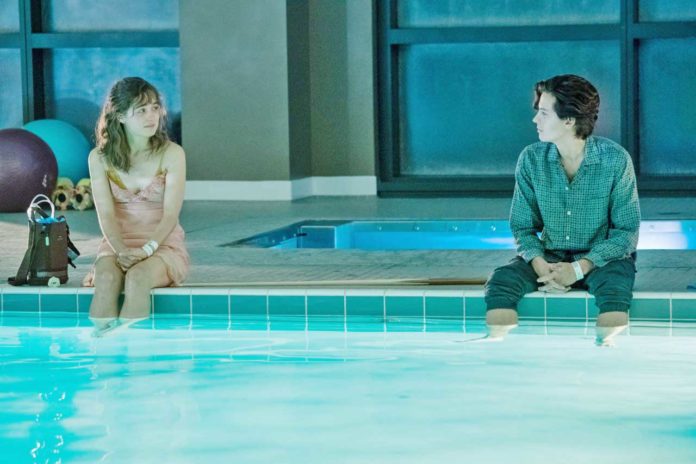GLAAD, the Gay and Lesbian Alliance Against Defamation, has issued its 2020 Studio Responsibility Index (SRI), a 55-page report assessing the representation and inclusion of LGBTQ characters in Hollywood films released theatrically between January 1 and December 31, 2019.
The report, which can be found online here, measures the “quality, quantity, and diversity” of eight studios and four subsidiaries. The report specifies the inclusion, from the number of identified characters, their race/ethnicity, sexual orientation, and gender identity. The screen time and role of queer and non-binary characters is also evaluated as well as content (e.g., anti-LGBTQ humor). “The Vito Russo Test” was also used to determine if a character is identifiably LGBTQ; that they are defined by something other than their sexuality; and they are significant to the plot.
Of the 118 films released last year, the GLAAD report found that 22 films, or 18.6% met the criteria, a 0.4% increase over the previous year. However, of those 22 films, only 9 featured characters with more than 10 minutes of screen time and more than 50% had queer characters on screen for less than 3 minutes.
Now the worse news: only 34% of LGBTQ characters were people of color, “a significant decrease” from previous years. Lesbians and bisexual characters also decreased in representation. And while trans actors appeared in 4 films in 2019, no on-screen characters were identified as being transgender. There was only one openly gay disabled character, Poe (Moises Arias) in “Five Feet Apart,” a Lionsgate release, last year.
Megan Townsend, Director of Entertainment Research and Analysis at GLAAD, who authored the report, explained in a recent zoom interview that whereas their TV report shows an upward trend towards progress, the representation of LGBTQ characters in studio films is more inconsistent. “Film is a risk-averse type of media, and the studios hesitate taking risks — whether they are risks or not — and that has allowed a false belief to take over: that inclusive and diverse stories don’t sell.”
But, she added, “That thought is changing. We’ve seen that across the board with ‘Crazy Rich Asians,’ ‘Black Panther,’ and ‘Love, Simon.’ Inclusive films do pay off. The thinking and conversations are starting to change.”
Townsend indicated that LGBTQ viewers are a powerful audience and provided the data to support that fact: “20% of Americans age 18-34 identify as LGBTQ, and we will see things more than once in the theater.”
Audience is key. The increased numbers of 18-34 year-olds identifying as LGBTQ have seen queer characters in film and on TV to feel abled and empowered to come out at a younger age. Last year’s teen films, “Booksmart” and “Good Boys,” as well as “Blockers” and “Love, Simon” in previous years, all featured LGBTQ characters in leading roles.
Townsend observed, “That goes hand-in-hand. What is on screen shapes how we interact with people. The more inclusive films we see empowers teens and younger people to feel safe to come out, and [it allows] their friend groups to recognize and understand and not have issues when friends come out.”
GLAAD’s SRI report also focused on racial diversity this year. “We made it a [goal] for studios to work to include making half of their LGBTQ characters be diverse. We hit 57% two years ago, but it’s declined since then. It needs deliberate and thoughtful correction when they look at greenlighting, acquiring, and casting [projects]. It is critical that our stories — when they get told — include our full community,” said Townsend.
Regarding the lack of trans characters on screen, she said, “We are happy to see trans actors being cast in roles to play characters not written explicitly as trans — and we want that to continue — but we also want to see characters identified as trans on screen and played by trans actors.”
Townsend continued, “Hollywood is starting to understand the interest in the [trans] community and impact of the recent documentary ‘Disclosure’ has been noted. Studios and networks are reaching out to tell trans character stories.” She is particularly excited by the forthcoming remake of “The Craft” which features a transgender character and trans actress Zoey Luna.
Representation is key. Several films released last year, including “What Women Want,” and “Stuber,” made gay and anti-gay jokes. Townsend monitored these films by asking, “Who is making the joke, and what are you supposed to laugh at? Is the joke being told in a way that isn’t doing active harm, or is it cruel and demeaning? It is all in how you tell the stories.”
“Look at queer and queer-coded villains in film. A lot of the time the queer identity is part of why they were a villain, which suggests queer people are bad. If you are going to have a queer villain, make sure you avoid those trends and patterns we’ve seen, and do it in a new and smart way.”
Despite the downbeat findings, Townsend is optimistic for the future. Even if “Star Wars” and Marvel films have featured minimal LGBTQ characters, Townsend acknowledges, “There are millions of great queer graphic novels and comic books waiting to be made.”
And while Hollywood is delaying releases because of COVID, none of the upcoming LGBTQ films on GLAAD’s radar have been dropped from a studio’s slate yet. Townsend remained enthused. “We are underserved, and we are ready to invest in films, we just need them to be delivered to us.”
The GLAAD Media awards will be broadcast on Facebook and YouTube on July 30 and on Logo August 3.
